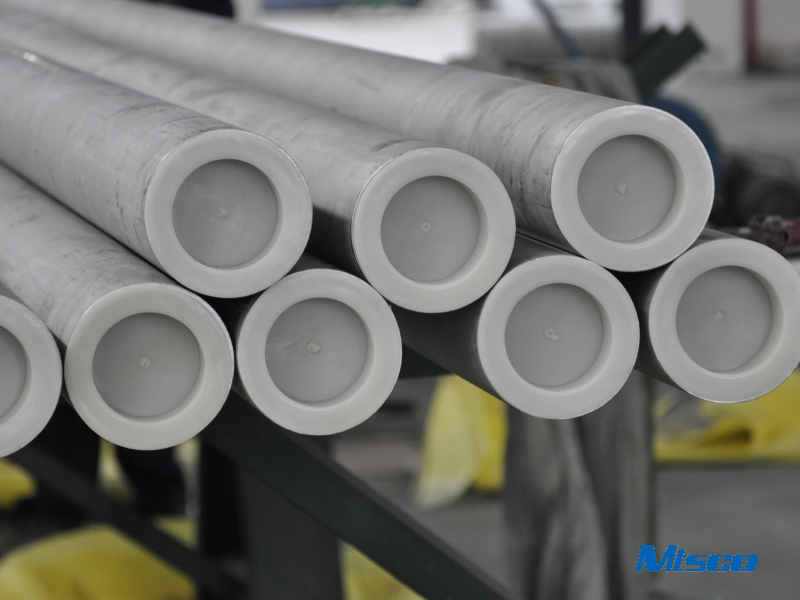Introduction to Nickel Alloy 600 and Inconel 600
Nickel Alloy 600, often branded as Inconel 600, is a notable material in the world of industrial metallurgy. This alloy, renowned for its exceptional resistance to oxidation and high temperatures, finds applications across a range of critical industries. From cryogenic environments to furnaces operating at temperatures up to 2000°F (1093°C), Nickel Alloy 600 continues to be a material of choice.
Chemical Composition of Alloy 600
● Nickel Content
One of the principal components of Alloy 600 is nickel, constituting a minimum of 72%. This high nickel content is fundamental to its exceptional corrosion resistance and high-temperature performance.
● Chromium and Iron
Chromium is the next significant component, typically present in amounts ranging from 14-17%. Iron content is lower, usually between 6-10%. These elements work synergistically with nickel to enhance the alloy’s overall properties.
● Additional Elements
Other elements like manganese (up to 1%) and silicon (up to 0.5%) are also part of its composition, contributing to its mechanical properties and manufacturing ease.
Comparison: Alloy 600 vs. Inconel 600
● Are They the Same?
Yes, Alloy 600 and Inconel 600 are chemically identical.
● Trademark and Naming Conventions
The name "Inconel 600" is more recognizable due to its trademark. However, the designation "Alloy 600" is technically precise and widely accepted in academic and industrial circles.
Physical and Mechanical Properties
● Strength and Durability
Nickel Alloy 600 is renowned for its impressive strength and durability. With outstanding mechanical properties, it is capable of withstanding severe mechanical stresses without deforming.
● Temperature Resistance
The alloy’s ability to function effectively at elevated temperatures—up to 2000°F (1093°C)—makes it invaluable for high-temperature applications, such as furnace components and aerospace industries.
Corrosion Resistance of Inconel 600
● Performance in Various Environments
Inconel 600 excels in resisting oxidation and corrosion in various environments. Whether exposed to acidic solutions or high-temperature oxidation conditions, the alloy maintains its structural integrity.
● Applications Needing Corrosion Resistance
Because of its excellent corrosion resistance, Inconel 600 is often utilized in nuclear reactors, chemical processing equipment, and gas turbines. It is particularly effective in environments exposed to chloride-ion stress corrosion cracking.
Applications in High-Temperature Environments
● Nuclear Reactors and Heat Exchanger Tubing
In the nuclear industry, Inconel 600 is used in reactor vessels and heat exchanger tubing due to its ability to withstand both radiation and high temperatures.
● Benefits in Aerospace Industry
In aerospace, components like jet engine turbine blades and other critical parts often rely on the high-temperature resilience of Inconel 600.
Fabrication Techniques for Alloy 600
● Welding, Brazing, and Soldering
Nickel Alloy 600 can be readily fabricated using conventional welding, brazing, and soldering techniques. It is particularly easy to work with, thanks to its ductility and mechanical properties.
● Cold and Hot Working Processes
The alloy can be hot or cold worked to create various forms, including sheets, rods, and tubes. The versatility in fabrication methods adds to its widespread use in multiple industries.
Industry Standards and Specifications
● ASTM, ASME, SAE Standards
Alloy 600 complies with numerous industry standards such as ASTM B 168, ASME SB 168, and SAE AMS 5540, among others. These standards ensure that the material meets specific performance criteria for various applications.
● Importance of Compliance
Adherence to these standards is crucial for maintaining the quality and reliability of the alloy in critical applications. Compliance ensures that the alloy performs as expected under demanding conditions.
Availability and Forms of Nickel Alloy 600
● Plates, Sheets, Tubes, and Rods
Nickel Alloy 600 is available in a variety of forms, including plates, sheets, tubes, and rods. This availability in multiple forms allows for its use in a wide array of applications, from structural components to specialized equipment.
● Custom vs. Standard Forms
While standard forms are readily available, custom shapes and dimensions can be fabricated based on specific requirements. This flexibility makes Nickel Alloy 600 highly adaptable to unique industrial needs.
Conclusion:
● Recap of Findings
In conclusion, Alloy 600 and Inconel 600 are indeed the same material. Inconel is simply a brand name used to market Nickel Alloy 600. Both share identical chemical compositions and properties, making the terms interchangeable in most contexts.
● Final Thoughts on Their Equivalence
Understanding that these names refer to the same alloy helps in making informed decisions for various industrial applications. Whether you refer to it as Alloy 600 or Inconel 600, the material offers unparalleled performance in high-temperature and corrosive environments.
Introduction to MTSCO
MTSCO is a factory complex consisting of multiple factories, built or invested in by MT Holding Group. The products, including n06600 pipe, are provided by MTSCO. Jiaxing MT Stainless Steel Co., Ltd (MTSCO) is engaged in R&D and smelting of superalloy and corrosion-resistant alloy products suitable for use in harsh environments. The annual output of high-nickel alloy seamless pipes can reach up to 3,000 tons, exported to more than 25 countries and regions. MTSCO focuses on quality improvement, employing a series of inspection equipment, ensuring comprehensive traceability from production to final product.


